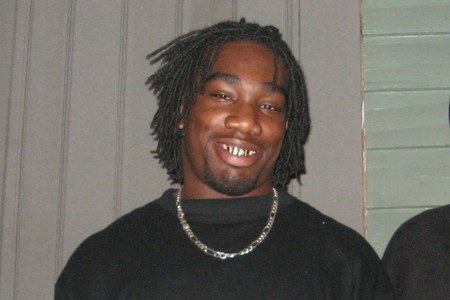Ryan Matthews

Ryan Matthews spent five years on Louisiana's death row for a crime he did not commit. Seventeen years old at the time he was arrested, Matthews was sentenced to death for the shooting death of Tommy Vanhoose, a convenience store owner, in Bridge City, Louisiana. DNA testing results both exonerated Matthews and revealed the identity of the actual perpetrator.
In April 1997, a man wearing a ski mask entered Vanhoose’s store and demanded money. When Vanhoose refused, the perpetrator shot him four times and fled, taking off his mask and diving into the passenger side window of an awaiting car.
Several eyewitnesses viewed the perpetrator’s flight. One witness was in her car and watched the perpetrator run from the store, fire shots in her direction, and leap into a car. When she was later showed a photographic array, she tentatively identified Matthews as the assailant. By the time of trial, she was sure that Matthews was the gunman.
Two other witnesses, in the same car, watched as the perpetrator shed his mask, gloves, and shirt as he fled. The driver claimed to have seen the perpetrator’s face in his rearview mirror while he was being shot at and trying to block the escape. This witness and his passenger were brought to a show-up hours later. The driver identified Matthews. His passenger was unable to make an identification.
Ryan Matthews and Travis Hayes, both seventeen at the time, were stopped several hours after the crime because the car they were riding in resembled the description of the getaway car. They were arrested and Hayes was then questioned for over six hours. In his initial statements to investigators, Hayes claimed that he and Matthews were not in the area when the crime occurred. Hayes eventually confessed that he was the driver of the getaway car. He stated that Matthews went into the store, shots went off, and Matthews ran out and got into the car. Both boys were described as borderline mentally retarded.
In 1999, based mainly on the identifications, Matthews was convicted of murder and was sentenced to die. Hayes was convicted of second degree murder and sentenced to life.
Matthews had maintained his innocence since arrest. The defense presented evidence that forensic testing of the mask excluded both Matthews and Hayes. A defense expert also testified that the car that the two boys were driving – the reason they were stopped – could not have been the getaway car because the passenger side window that Matthews allegedly jumped through was inoperable and could not be rolled down. Other witnesses to the crime described the shooter as being much shorter than Matthews.
Continued defense investigation by William Sothern and Clive Stafford Smith of the Louisiana Crisis Assistance Center and DNA testing in another murder case proved to be the keys to proving Matthews’ innocence. Another murder occurred shortly after Vanhoose’s death in the same area. A local resident, Rondell Love, was arrested and pled guilty. Love bragged to other inmates that he also killed Vanhoose, prompting Matthews’ attorneys to begin investigating Love. DNA test results from the second murder were compared to results from the Matthews conviction, indicating that Love had been wearing the mask that was left behind in the Vanhoose murder. Testing on the mask, gloves, and shirt had already excluded Matthews and Hayes, but these results became conclusive after Love’s profile was included.
Over a year after this information was discovered, Matthews was granted a new trial. He was released in June 2004, on bond, as he awaited a new trial. In August 2004, prosecutors asked the court to lift the bond and vacate the conviction.
Matthews became the 14th death row inmate in the United States proven innocent by postconviction DNA testing.
After two more years of legal battles, Travis Hayes was released in December 2006 and exonerated in January 2007.
Hayes received $252,000 in state compensation. Matthews was awarded $133,000 in compensation.

Time Served:
5 years
State: Louisiana
Charge: Murder
Conviction: First-degree Murder
Sentence: Death
Incident Date: 04/05/1997
Conviction Date: 05/07/1999
Exoneration Date: 08/09/2004
Accused Pleaded Guilty: No
Contributing Causes of Conviction: Eyewitness Misidentification, False Confessions or Admissions
Death Penalty Case: Yes
Race of Exoneree: African American
Race of Victim: Caucasian
Status: Exonerated by DNA
Alternative Perpetrator Identified: Yes
Type of Crime: Homicide-related
Year of Exoneration: 2004